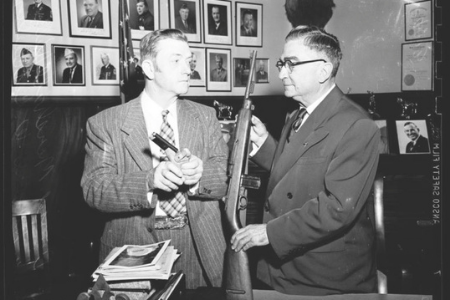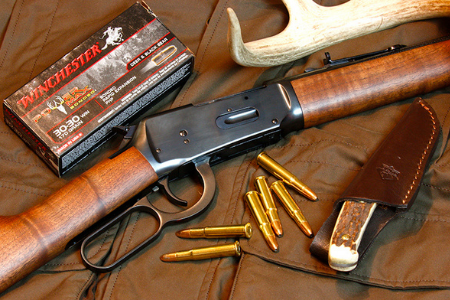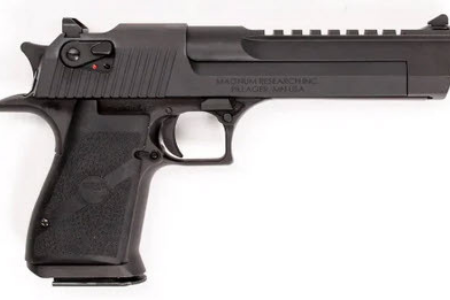In 1982, a man named Ronnie Barrett was a professional photographer taking photos of a military patrol boat on Tennessee’s Stones River. The patrol boat was armed with two M2 .50 caliber heavy machine gun mounts. Barrett was intrigued by those guns and he wondered if a rifle could be designed to fire the .50 BMG bullet (“BMG” = Browning Machine Gun).

With no firearms design experience or training, Barrett hand-drew a design for a .50 caliber rifle. Barrett drew the rifle in three dimensions, to show how it should function, and then took his design to local machinists. But nobody wanted to help him. He believed that if a .50 caliber shoulder-fired rifle was useful someone would have developed one by then. Barrett finally found one sympathetic machinist, Bob Mitchell, and the two set to work. Less than four months later, they had a prototype rifle.
He completed his first rifle, the Barrett .50 BMG in 1982. It was a shoulder-fired, semi-automatic rifle designed around the .50 BMG cartridge. The weird part is that the Barrett rifle’s barrel recoiled backward after firing. A rotating-lock breech block equipped with an accelerator arm used part of the recoil energy to push back the block on firing. This cycled the action, cocked the firing pin, and loaded a new round from a ten-round steel magazine.
The result was a weapon that should generate sufficient recoil to make repeated firings uncomfortable, but using the recoil energy to cycle the action and the weapon’s weight reduced felt recoil. A double baffle muzzle brake that vented exhaust gasses to the left and right was added later and further reduced recoil. This makes total sense. A .50 caliber machine gun mounted on a tripod is geared for continuous rapid fire. However, you would not want the same caliber fired from a shoulder-mounted gun. The shooter’s shoulder will be black and blue before the magazine was empty. This gun was shoulder-fired, and was designed for single shot shooting…exactly what snipers do.

Barrett initially built thirty production rifles and placed an ad in The Shotgun News. The initial order quickly sold out and Barrett increased production. The Central Intelligence Agency saw the ad and placed an order for rifles to equip the Mujahideen guerrillas that were fighting Soviet Army occupiers in Afghanistan. The CIA saw the Barrett rifle as the ideal weapon for engaging the Soviets from long range. The Barrett’s ability to destroy enemy war material such as communications equipment, vehicles, weapons and other items with the heavy .50 BMG round created a new category of weapon—the anti-materiel rifle.

The Barrett M82 was fifty-seven inches long, had a twenty-nine-inch barrel, and weighed 28.44 pounds. The M82 delivered previously unheard levels of energy and distance in a sniper rifle. The M33 .50 BMG bullet weighed 661 grains, or 1.5 ounces, compared to the fifty-five grains of 5.56mm ammunition used in M16-type rifles. The M33 round had a velocity of 2,750 feet per second at the muzzle and delivered an amazing 11,169-foot pounds of energy, compared to just 1,330-foot pounds for the 5.56 round. The Barrett round was so powerful the bullet still retained 1,300 foot-pounds of energy after traveling 2,000 yards downrange. At a distance of 1.4 miles the M33 round still packs 1,000-foot pounds of energy—more than three times the power of a 9mm pistol bullet.

In 1989, the Swedish Army placed the first military order for the Barrett Model M82A1, ordering 100 rifles. In 1990, the U.S. Marine Corps placed an order for 125 M82A1s and the rifles participated in Operation Desert Storm, the campaign to liberate Kuwait. The Marines bought more rifles in the 1990s, and the U.S. Army finally came onboard and purchased the rifle as the M107 in 2002. The utility of the heavy caliber sniper rifle can disable a multi-million dollar jet on the ground with a two-dollar bullet. This fact has been repeatedly proven in numerous conflicts, including the wars in Iraq, Afghanistan and against the Islamic State.

Today, militaries of more than sixty countries use the Barrett M82A1. These are mostly NATO countries and U.S. allies in Asia and the Middle East. All the major military powers field their own 12.7mm/.50 caliber-class sniper rifles, with Russia’s OSV-96 rifle serving with the Russian Ground Forces and China’s Zijiang M99 serving with the People’s Liberation Army. The Barrett M82A1, the rifle nobody wanted to build, ended up starting a revolution.
There is a spoof of the jewelry store commercial “He Went To Jared”, called “She Went to Barrett”. We have custom printed merchandise containing that spoof in our custom printed merchandise store. Click here to see all the product offerings.



